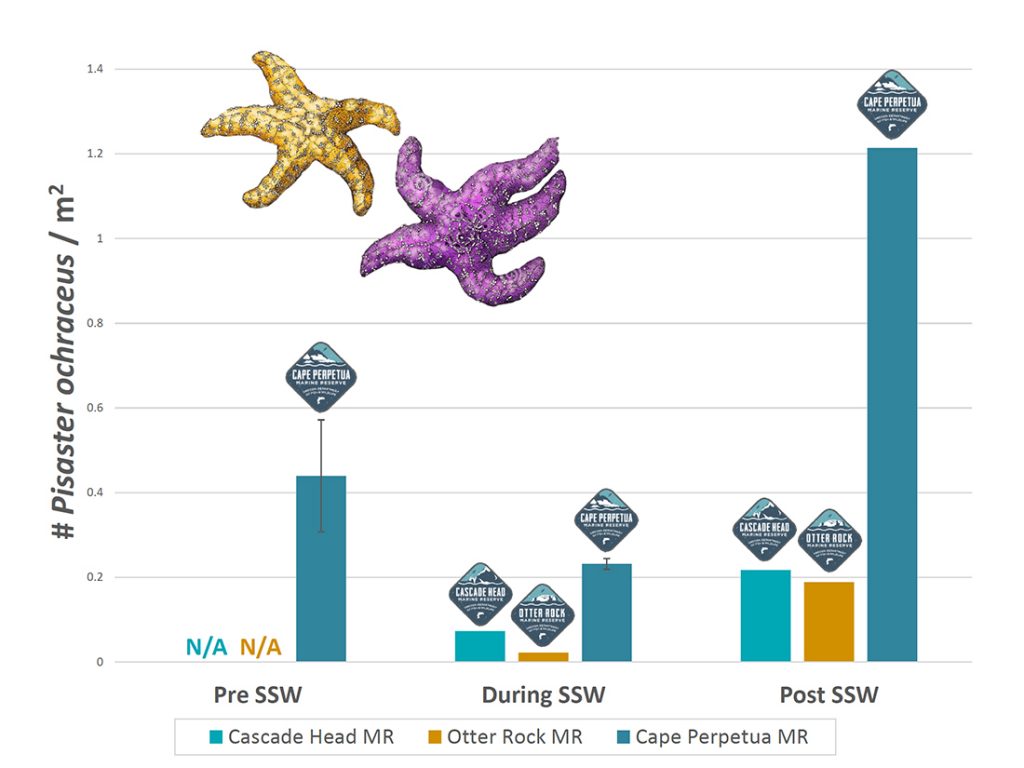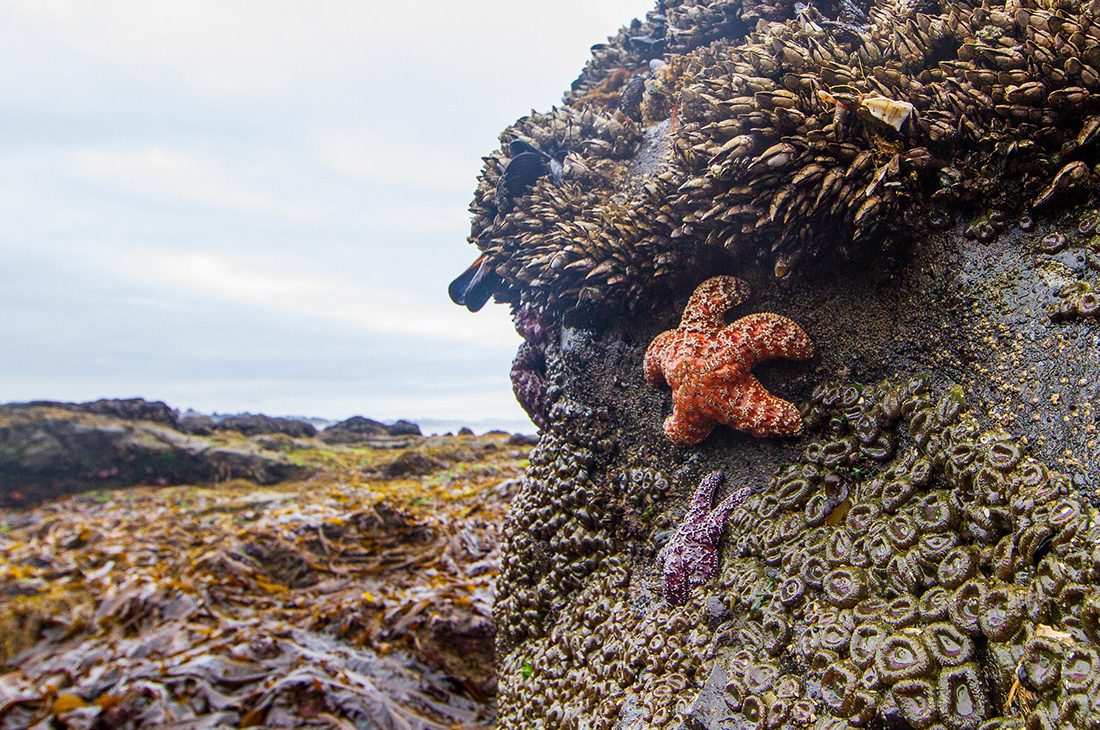Summertime means intertidal monitoring season for the ODFW Marine Reserves Program. When tides are at their lowest from June to August, we venture into the intertidal zone to survey sea stars and their habitats as part of multiple long-term intertidal monitoring studies in Oregon.
Sea stars are the dominant predator in rocky intertidal habitats, keeping mussels in check and providing habitat for lots of invertebrates and algae. Unfortunately, they were nearly wiped out by sea star wasting disease (SSW) a few years back. Our biodiversity surveys track changes in the intertidal community, including sea stars, and are conducted every few years at three marine reserve sites that have accessible intertidal habitat (Cascade Head, Otter Rock and Cape Perpetua).

Results from these intertidal surveys indicate that while Ochre Sea Star (Pisaster ochraceus; the dominant sea star) densities declined during the SSW outbreak, they are rebounding nicely at all three marine reserve sites. The increasing densities indicate that these sea stars are on the mend, which is a huge relief, as many sea star populations have not recovered in many areas of California.
Note: Sea star surveys began at Otter Rock and Cascade Head in 2015, so no pre-sea star wasting data are available from these sites. Sea star data extracted from the ODFW-MARINe intertidal biodiversity surveys.
